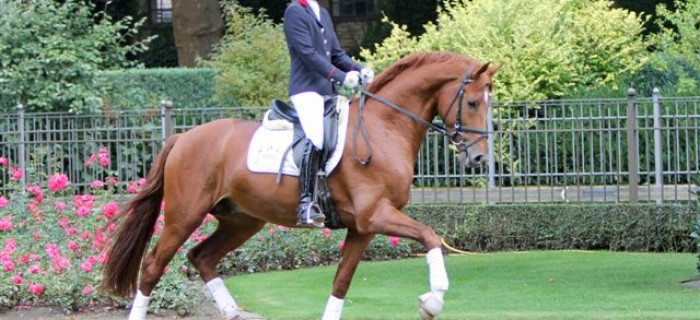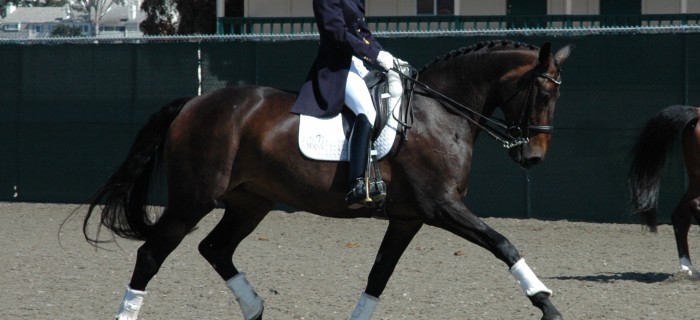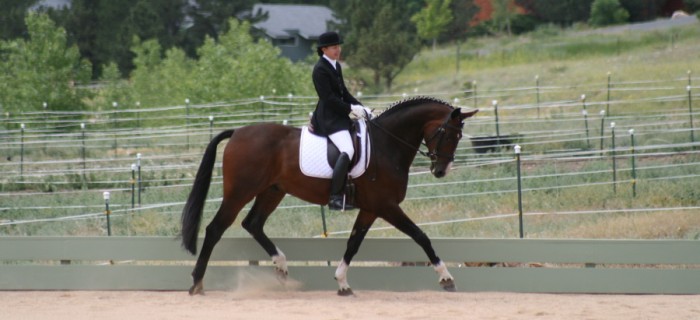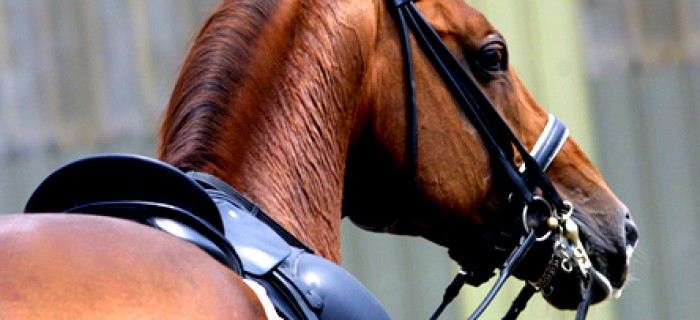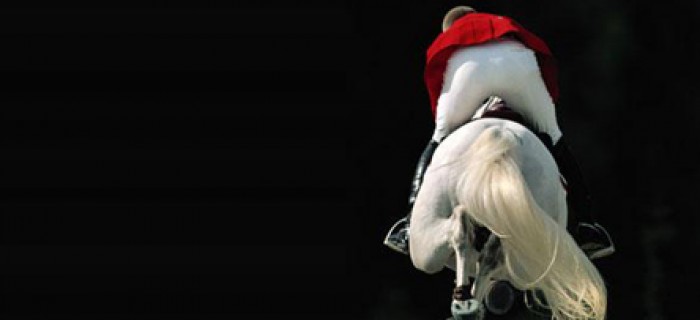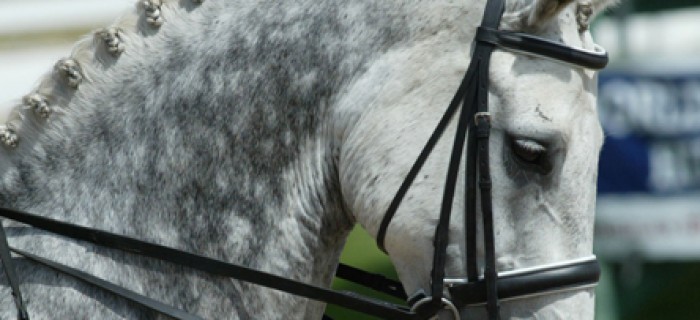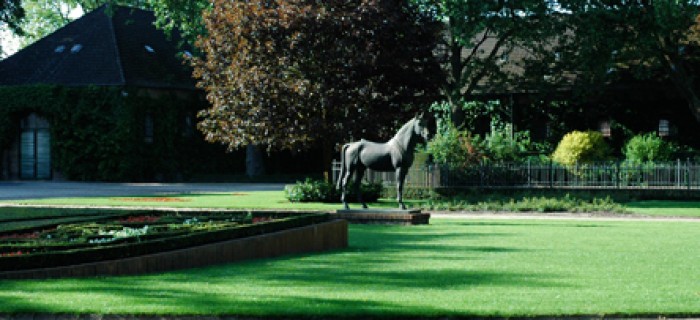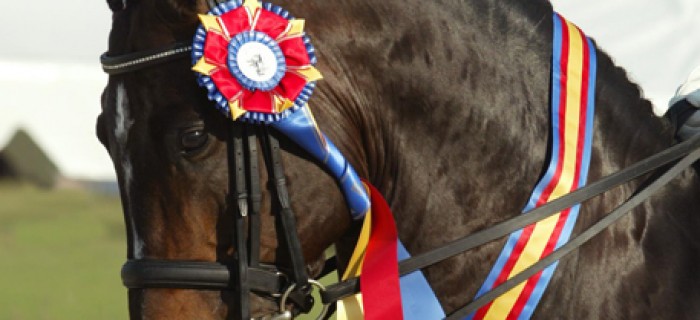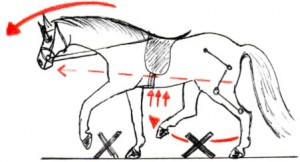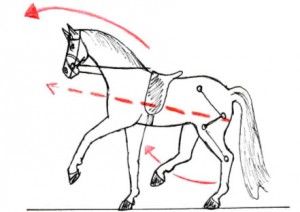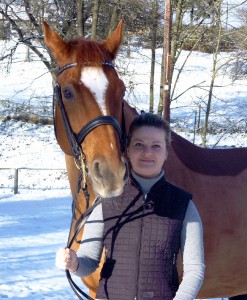Introduction
While being very popular in Germany and Europe, many other horse riding countries do not use cavaletti work on a regular basis. Cavaletti is the Italian expression that describes using poles put in a row, within a certain distance to help train the horse within its three gaits-walk, trot, canter. You can school your horse using cavaletti on straight or circle lines with rider or while lungeing. Starting the horse on the lunge is a very common way to begin cavaletti work. This way the horse does not have to balance a rider on its back and is able to concentrate fully on its task. Once the horse is comfortable with cavaletti work on the lunge the horse can be schooled using cavalletti with a rider.
Why cavaletti work?
Offering your horse this kind of work can be a very effective way to help your horse to build muscles and to find balance. Cavaletti work has several advantages when training a horse. For example cavaletti exercises help to activate your horse’s hind leg by challenging him to pull his hind leg upward-forward in order to step over the cavaletti. Furthermore it helps him to relax his neck and back by arching the back upwards and bending his neck seeking the bit in a forward-downward manner (Illustration 1).
This arching of the back upwards is produced by the movement of the hindleg in the upward-forward manner. In order to balance and see the poles on the ground the horse has now to bend his neck forward-downward thus seeking the bit. You can easily simulate this movement yourself: get down on your hands and knees and form a hollow back while pulling your neck upward looking at the ceiling. Now try to pull your knee toward your chest in an upward-forward manner. You can see that it is extremely uncomfortable and it is impossible to do the movement this way repeatedly. Now repeat the movement while arching up your back and lowering your neck looking at the ground. See how easy the movement is this way? In order to work with you the way you want him to your horse will notice very fast that this is the correct movement over the cavaletti.
These three ingredients: The active hind leg, correctly using the back and neck muscles, and the horse seeking true contact will help the rider to achieve true collection in the advanced training (Illustration 2).
But even if your goal is not that sophisticated, cavaletti work will benefit your horse by helping him to carry the rider because he is in better balance and builds muscle the correct way. The other wonderful thing about working with cavaletti is that it is a lot of fun!
What does cavaletti work do for horse?
Cavaletti work helps your horse to
- get into balance
- build up muscle
- kickstart its hindleg
All this enables your horse to really work with you the way it wants to. By this I mean, your horse gives you all of its concentration: mental and physical power added with the touch of effortlessness in its movements because of his increasing strength.
Security advices
- Start your cavaletti work with a thorough warm up. Both horse and rider should be working for about 20 min before starting cavaletti work.
- Be sure to protect your horse’s legs with bandages, sport boots, and bell boots.
- Shorten your stirrups two or three holes.
- Stabilise the poles you are using. The poles should never lie on the ground without some sort of block securing them. If your horse steps accidentally on them he can hurt its fetlock badly. You can use the fabricated cavaletti blocks or even a short plank mounted under the poles will prevent that they roll.
- Do not use cavaletti of the type with a little cross while lungeing. The lunge can get caught in the cross and tear the cavaletti behind the horse thus causing your horse a lot of stress.
- Be sure to have the correct distances for your horse’s stride. When working in a group be sure to have a helper on the ground who adjusts the cavaletti for each horse.
As mentioned in the introduction, you can enhance your horse’s movement in walk, trot and canter. Working with cavaletti on the straight line in walk will do a lot for your horse’s rhythm. It helps to strengthen the clear four-beat-rhythm of the walk and help the horse to let the walk “flow” through its body. I specially recommend it for nervous horses that tend to lose their rhythm in the walk and tense their back up. Even so, this is the right beginning for every horse when starting to work with cavaletti. Today we will do a bit of medium walk over cavaletti. If your horse has never worked with cavalettis start with one or two poles adding a third and fourth if your horse is comfortable. Remember: you and your horse should have fun while working together. Do not try to put too much into today’s work. Tackle the cavalleti work again in two or three days and you will see how much your horse has learned in a short period of time.
The poles are put into a row with a distance of 80 cm up to 100 cm in between. This depends on the stride of you horse and on the question whether you want to make the stride longer or shorter or just strengthen the rhythm. Start with long reins and let your horse look at the cavaletti . Then ride over the cavalleti every second round. Ride your horse straight before, over,and after the cavaletti keeping a steady contact with both reins. Try to preserve the rhythm you have felt while riding over the cavalettis. It helps many riders to count the rhythm over the cavaletti and to keep counting after them. You can add work in trot or canter on your rounds you are not riding over the cavaletti. Then half halt your horse back to the walk, stabilise the rhythm, and let your horse walk over the cavaletti, remembering to keep the rhythm of the walk. Then trot or canter again but come back to the cavaletti in walk. It will be amazing to see what happens with your horse after a few rounds of this exercise. Your horse will start to relax and seek the bit.
Does your horse feel good and does he offer to do more than this exercise? In this case, we can start to work in trot. Remember: always start with one or two poles at a time. Just because your horse does the cavaletti work in the walk, does not mean that he can muster up the balance and concentration to do four cavaletti in trot from the beginning. The distance for the placement of the cavalletti in the trot is 1.20 to 1.40 m (Illustration 3), depending on your horse’s stride and your goals. If we want to strengthen the rhythm a distance of 1.20 m will be ok. The procedure is the same as in walk: you trot every second round over the cavaletti, ride straight before and after the cavaletti and try to preserve the rhythm. You can add canter or walk work on your “cavaletti-free” rounds, then half halt to trot and trot over the cavaletti again. Integrate your cavaletti work into your dressage work, offering your horse every now and then one round over the cavaletti and then returning to your work you were doing before. If you think that you horse still has the strength to do the cavalletti in canter, put the poles in a distance of 3 to 3.5 m. Start with one cavaletti and find a rhythm in the canter before cantering over the cavaletti. Do not change this rhythm when starting your work over the cavaletti. After a while, you can add more cavalettis and thus work on a steady rhythm.
General recommendation
Work on both leads. Do not bore your horse with working too long over the same distances. Remember that cavaletti work is strenuous for your horse. The cavaletti work shouldn’t exceed 30 min. Finish your training when your horse does the best. Do not forget to let your horse relax after this work by walking with him for a while and to tell him that he did great. Enjoy riding!
© Adriane Setton, Kelkheim, Germany
Author’s Bio
Adriane, German Trainer Level A, started riding at the age of 4. Over the last 30 years, she has been involved with the training of the horse and rider. Starting as a three-day-eventer, dressage became her passion at age 15. She has successfully trained horses and riders in Germany and Mexico.
Adriane was awarded the High Silver Medal in 1996 by the Deutsche Federation Equestre Nationale (FN). In 2005, she received the highest trainer level licence available through the FN, the German Trainer A licence. The final exam included a practical riding test in jumping, dressage and cross-country. The test also included giving training lessons in each of these disciplines in front of a commission and theoretical testing covering riding theory, as well as veterinary and a conformation evaluation. Willi the Champ – who takes the credit for 50% of this Team’s licensing success, was trained by Adriane up to level M in dressage, and L level in jumping and cross country.
While being a competitive rider, Adriane loves to further educate riders and inspire their competitive goals, as well as re-educating riders with the basics. Adriane considers her love for the horses and her dedication and enthusiasm for the sport a reason for her past successes.
In this monthly series, we will go through horse training topics and Adriane will give you the opportunity to offer your horse new ways to classically develop your horse.
Remember: the moment you stop trying to ride better is the moment you stop riding well.
Share

